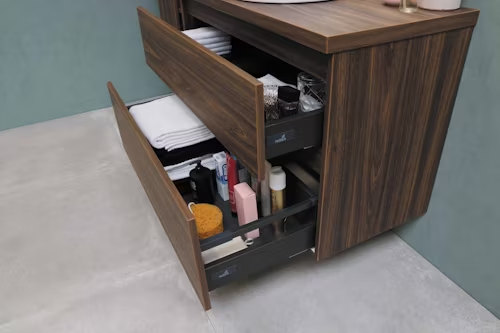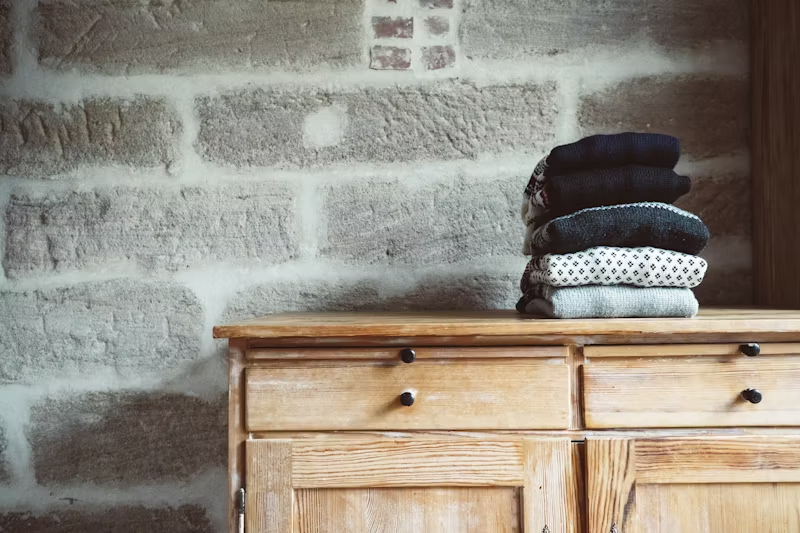A storage room can be a convenient place to store all the items that don’t fit in the rest of the house. However, it can quickly become cluttered and disorganized, making it difficult to find what you need. A well-organized storage room can save time and reduce stress when it comes time to find something. In this article, we’ll provide tips and habits to help you organize your storage room efficiently.
The first step in organizing your storage room is to declutter. This means going through all the items in the room and deciding what to keep, donate, or throw away. Once you’ve pared down the items, it’s easier to find a place for everything. Next, it’s essential to create a system to store the remaining items in a way that makes sense to you. This could mean using shelves, bins, or cabinets to keep items organized and easy to find.
Good habits are also essential for maintaining an organized storage room. Make sure to put items back in their designated places after use and avoid letting clutter accumulate. By following these tips and habits, you’ll be able to create a well-organized storage room that makes it easy to find what you need when you need it.
Planning Your Storage Room Layout
When it comes to organizing a storage room, planning the layout is crucial. A well-planned layout can help maximize storage space and make it easier to find items when you need them. Here are some tips to help you plan your storage room layout.
Assessing Your Space
Before you start planning your storage room layout, it’s important to assess your space. Take a look at the size and shape of your storage room, as well as any obstacles that may be in the way, such as pipes or support beams. This will help you determine how much storage space you have to work with and what kind of organization strategies will work best.
Determining Storage Needs
Once you’ve assessed your space, it’s time to determine your storage needs. Make a list of all the items you need to store in your storage room, and categorize them by type. This will help you determine what kind of storage solutions you need, such as shelves, bins, or hooks. It’s also important to consider how often you’ll need to access each item, as this will help you determine where to store it.
Sketching a Floor Plan
Once you’ve assessed your space and determined your storage needs, it’s time to sketch a floor plan. This will help you visualize how you want to organize your storage room and where to place each item. Be sure to make note of any obstacles or features that may affect your storage solutions, such as windows or doors.
When sketching your floor plan, consider maximizing vertical space by adding shelves or hanging storage solutions. This can help you make the most of your storage room and keep items off the floor. It’s also important to consider your organization strategies, such as grouping similar items together or labeling bins and shelves.
By assessing your space, determining your storage needs, and sketching a floor plan, you can plan a storage room layout that maximizes space and makes it easy to find items when you need them.
Decluttering Before Organizing
Before organizing a storage room, it is essential to declutter the space. This process helps to remove unnecessary items and create more space for the essential ones. Here are some steps to follow when decluttering a storage room:
Sorting Items
The first step in decluttering a storage room is sorting the items. This process involves grouping similar items together and creating categories. For instance, clothes can be categorized as shirts, pants, dresses, and so on. Sorting items makes it easier to identify what is essential and what is not.
Purge, Donate, or Sell
Once the items are sorted, it is time to decide what to keep, donate, or sell. The general rule is to keep items that are essential or have sentimental value. Items that have not been used in a long time or are no longer needed can be donated or sold. This process helps to reduce clutter and create more space in the storage room.
Trash Disposal
Items that are broken, damaged, or expired should be disposed of in the trash. It is essential to dispose of these items properly to avoid creating a health hazard. For instance, old batteries and electronics should be disposed of in designated areas to prevent environmental pollution.
In conclusion, decluttering a storage room is an essential step in organizing the space. Sorting items, deciding what to keep, donate, or sell, and disposing of trash properly can help create more space and reduce clutter.
Selecting Storage Solutions
When it comes to organizing a storage room, selecting the right storage solutions is crucial for maximizing space and maintaining an organized environment. Here are some key factors to consider when selecting storage solutions:
Shelving Units and Cabinets
Shelving units and cabinets are great for storing items that need to be accessed frequently. They come in various sizes and materials, such as wood, metal, and plastic. Cabinets with doors are ideal for storing items that need to be protected from dust and other elements. Shelves can be adjustable, allowing for customization to fit the items being stored.
Bins, Baskets, and Containers
Bins, baskets, and containers are perfect for storing items that are not used frequently or need to be protected from dust and other elements. Clear bins are especially useful because they allow for easy identification of the contents inside. Baskets are great for storing items that are irregularly shaped or difficult to stack. Containers come in various sizes and materials, such as plastic and metal.
Hooks and Hidden Storage
Hooks and hidden storage solutions are great for maximizing space and keeping items off the floor. Hooks can be used to hang items such as bicycles, ladders, and other large items. Hidden storage solutions, such as under-shelf baskets and overhead storage racks, are great for storing items that are not used frequently.
Overall, selecting the right storage solutions is crucial for maintaining an organized and functional storage room. By considering factors such as the frequency of use and the size and shape of items being stored, one can select the best storage solutions to fit their needs.
Organizing Items by Category
When it comes to organizing a storage room, categorizing items is a great way to keep things neat and tidy. By grouping similar items together, you can easily find what you need without having to dig through piles of clutter. Here are some tips for organizing items by category:
Labeling for Easy Access
Labeling is a simple yet effective way to organize items by category. By labeling containers, shelves, and drawers, you can easily identify where things belong and retrieve them quickly. Use clear containers and label them with the contents inside. This will help you easily see what’s inside without having to open every container.
Utilizing Dividers and Drawer Organizers
Dividers and drawer organizers are great tools for organizing items by category. They allow you to separate items into smaller sections, making it easier to find what you need. Drawer dividers can be used to organize small items such as tools, craft supplies, and office supplies. Dividers can also be used to organize holiday decorations, such as Christmas ornaments or Halloween decorations.
Seasonal and Infrequently Used Items
Seasonal and infrequently used items can take up a lot of space in a storage room. To keep these items organized, categorize them by season or frequency of use. Use clear containers to store seasonal items such as winter coats or summer sports equipment. Label the containers with the season or holiday they belong to. For infrequently used items such as camping gear or holiday decorations, use clear containers and label them with the contents inside.
Overall, organizing items by category is a great way to keep your storage room neat and tidy. By utilizing dividers, drawer organizers, and clear containers, you can easily find what you need and keep your storage room clutter-free.
Maintaining a Clutter-Free Space
Once a storage room is organized, it’s important to maintain it to ensure it stays clutter-free. Regular cleaning and reassessment, as well as adopting organizational habits, can help keep the space organized and functional.
Regular Cleaning and Reassessment
To maintain a clutter-free storage room, it’s important to regularly clean and reassess the space. This can be done on a weekly or monthly basis depending on the amount of use the room gets. During the cleaning process, items that are no longer needed or used should be removed and either donated, sold, or thrown away.
It’s also important to reassess the storage system to ensure it’s still working effectively. If items are constantly being moved around or are difficult to access, it may be time to reorganize the space.
Adopting Organizational Habits
Adopting organizational habits can help maintain a clutter-free storage room. This includes putting items back in their designated spots after use, labeling containers and shelves, and avoiding the accumulation of unnecessary items.
One effective habit is to group similar items together. For example, all holiday decorations can be stored in one area, while sports equipment can be stored in another. This makes it easier to find and access items when needed.
Another habit is to follow step-by-step instructions for organizing and storing items. This can include using storage containers of the same size and shape, and storing items vertically to maximize space.
Overall, maintaining a clutter-free storage room requires a commitment to regular cleaning and reassessment, as well as adopting organizational habits. By following these techniques, the storage room can remain functional and organized for years to come.



